Isocoma rusbyi, Rusby's Goldenbush
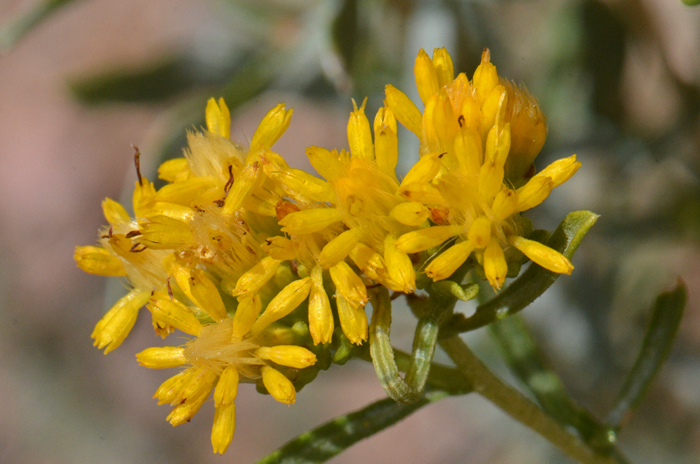
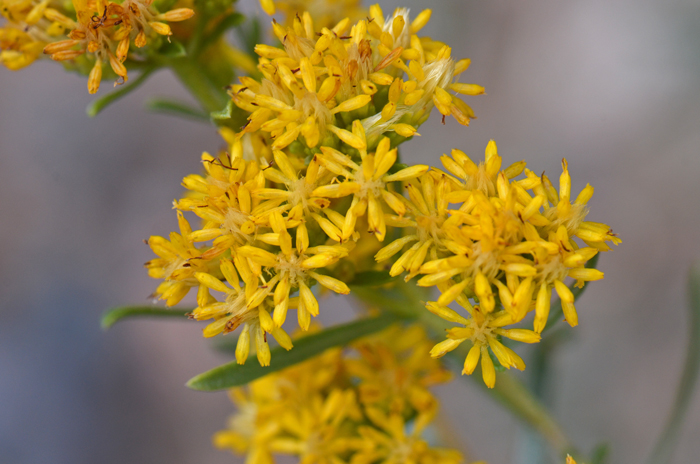
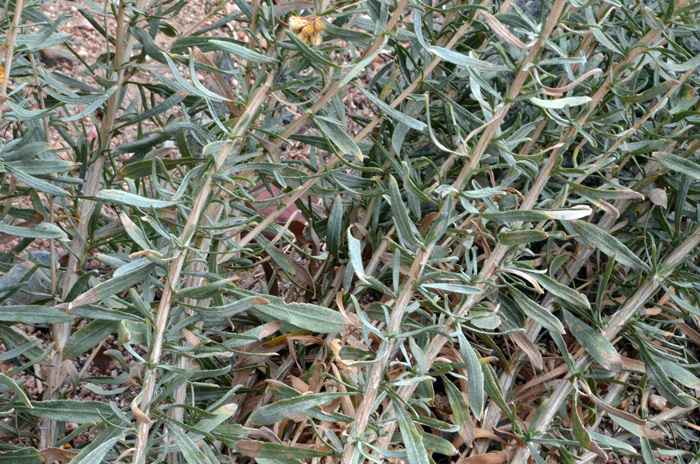
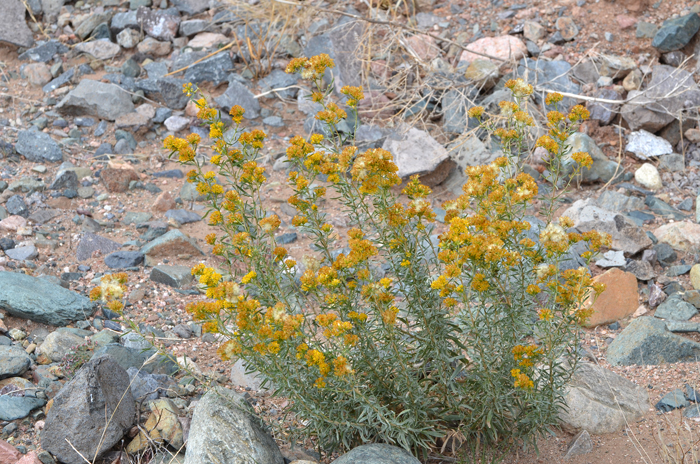
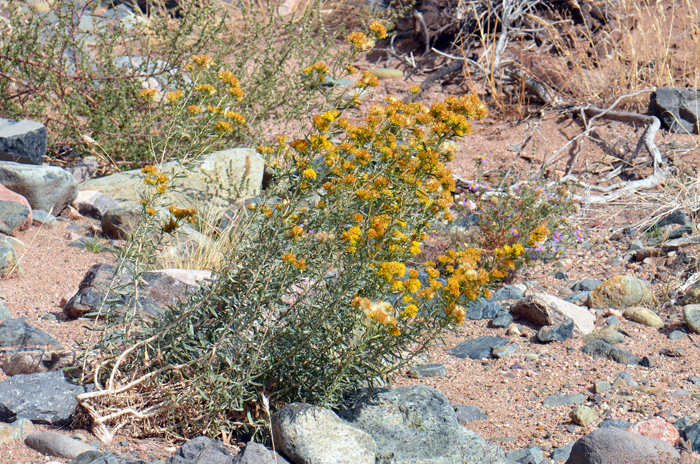
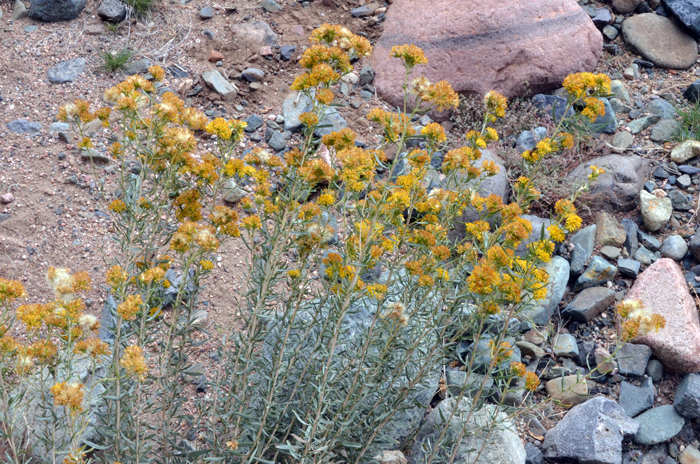
Scientific Name: Isocoma rusbyi
Common Name: Rusby's Goldenbush
Also called: Goldenbush
Family: Asteraceae, Sunflower Family
Synonyms: (Aplopappus drummondii, Haplopappus rusbyi)
Status: Native
Duration: Perennial
Size: Up to 3 feet (1 m)
Growth Form: Subshrub; woody, stems without surface ornamentation, light colored.
Leaves: Light green; narrowly linear; up to 2 inches (1 cm) in length.
Flower Color: Yellow disk florets only; numerous flower heads (20 plus) on tips of stems; fruit a cypsela.
Flowering Season: July or August to November
Elevation: 2,500 to 5,000 feet (762-1,524 m)
Habitat Preferences: Lower and upper deserts, pinyon-juniper, chaparral vegetation; Creosote Bush (Larrea) communities, washes, rocky, sandy and gravelly areas.
Recorded Range: Distribution limited in the United States to the southwestern states of AZ, CO, NM and UT. Found mostly in central and northern AZ and southeast UT, with much smaller populations in southwest CO and northwest NM. Rusby's Goldenbush is also native to northwest Mexico.
North America & US County Distribution Map for Isocoma rusbyi.
North America species range map for Rusby's Goldenbush, Isocoma rusbyi:
North American range map courtesy of Virginia Tech, Dept. of Forest Resources & Environmental Conservation
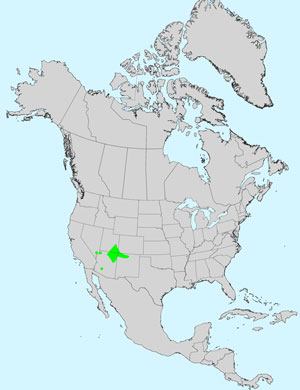
U.S. Weed Information: Unknown
Invasive/Noxious Weed Information: Unknown
Wetland Indicator: Unknown
Threatened/Endangered Information: Unknown
The genus Isocoma was published by Thomas Nuttall, (1786-1859), in 1840.
In the Southwestern United States: Arizona has 5 species of Isocoma, California, Utah and Texas each have 3 species, Nevada has 1 species and New Mexico has 4 species. Data approximate and subject to revision.
Comments: Rusby's Goldenbush is a fall blooming yellow daisy formerly included in the genus Haplopappus called Rabbitbrush and Goldenweed. This species and several others were reclassified to Isocoma and other genera.
In Southwest Desert Flora; also see: Alkali Goldenbush, Isocoma acradenia, Southern Goldenbush, Isocoma pluriflora and Burroweed, Isocoma tenuisecta.
The genus Isocoma was published by Thomas Nuttall, (1786-1859), in 1840.
The species epithet “rusbyi” (rus'byi:) is named in honor of Henry Hurd Rusby (1855-1940)

